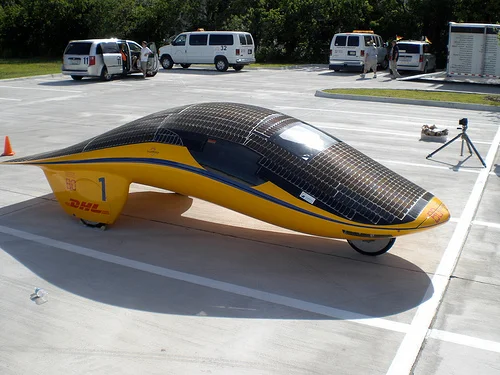Solar car
A solar car is a solar vehicle used for land transport.
Solar cars combine technology typically used in the aerospace, bicycle, alternative energy and automotive industries. The design of a solar vehicle is severely limited by the amount of energy input into the car.
If you drove a solar-powered car, that auto dream would come true. Much like solar-powered homes, solar cars harness energy from the sun, converting it into electricity. That electricity then fuels the battery that runs the car’s motor. Instead of using a battery, some solar cars direct the power straight to an electric motor.
Solar cars can accomplish this through photovoltaic cells (PVC). PVCs are the components in solar paneling that convert the sun’s energy to electricity. They’re made up of semiconductors, usually made of silicon, that absorb the light. The sunlight’s energy then frees electrons in the semiconductors, creating a flow of electrons. That flow generates the electricity that powers the battery or the specialized car motor in solar cars. For more details about solar energy
How It Works
Solar cars depend on PV cells to convert sunlight into electricity. Unlike solar thermal energy which converts solar energy to heat for either household purposes, industrial purposes or to be converted to electricity, PV cells directly convert sunlight into electricity.When sunlight (photons) strike PV cells, they excite electrons and allow them to flow, creating an electrical current. PV cells are made of semiconductor materials such as silicon and alloys of indium, gallium and nitrogen. Silicon is the most common material used and has an efficiency rate of 15-20%.
The motors used in solar cars typically use less power than a toaster, about 2 or 3 horsepower, yet solar cars can attain the same speed as a typical family car (100 miles per hour (160 km/h)).The battery pack in a typical solar car is sufficient to allow the car to go 250 miles (400 km) without sun, and allow the car to continuously travel at speeds of 60 mph (97 km/h).




